

The global Cyber Physical System (CPS) market is poised for significant growth between 2024 and 2031. With the increasing digitization of industries, automation, and the integration of Internet of Things (IoT) technologies, CPS has emerged as a vital component across various sectors. Cyber Physical Systems seamlessly integrate computational processes with physical systems, enabling real-time interactions and control of devices across networks. These systems play a critical role in sectors like manufacturing, healthcare, transportation, energy, and smart cities.
As industries aim for more automation, higher efficiency, and smarter operations, the adoption of CPS is accelerating. International Market Research (IMR) forecasts substantial growth in this market, driven by the convergence of AI, machine learning, and IoT technologies.
Market Overview
The global CPS market was valued at approximately $88.6 billion in 2023, and it is expected to grow at a compound annual growth rate (CAGR) of 10.5% between 2024 and 2031. By the end of 2031, the market is projected to reach a value of around $197.2 billion. The growing need for real-time monitoring, optimization, and control of complex physical systems across industries is the primary driver for this market.
Key Drivers of Growth:
2.Smart Cities and Infrastructure: The development of smart cities is further boosting the demand for CPS, which enables smart grids, intelligent transportation systems, and connected infrastructures.
3.Healthcare Applications: Cyber Physical Systems are playing an increasingly important role in healthcare, especially in areas like robotic surgeries, telemedicine, and patient monitoring. The growing focus on improving healthcare services through technology is expected to bolster demand for CPS in the sector.
4.Advancements in AI and IoT: The integration of CPS with artificial intelligence and IoT is enabling more intelligent and autonomous systems. This trend is expected to open new opportunities in various sectors, including energy, automotive, and consumer electronics.
Segmentation Analysis
IMR projects that the software segment will experience the fastest growth between 2024 and 2031, as demand for integrated platforms and control systems increases across industries. The hardware segment accounted for the largest market share in 2023, at 53.4%, owing to the extensive use of sensors, actuators, and controllers in CPS deployments. However, the services segment is also expected to witness strong growth, as businesses require ongoing support for the integration and maintenance of CPS solutions.
The manufacturing sector is the dominant industry vertical in the CPS market, contributing to around 37.8% of the market share in 2023. This dominance is attributed to the growing adoption of smart manufacturing and industrial automation. IMR forecasts that by 2031, the market share of the manufacturing sector will remain significant but will see a slight decline as other sectors, like healthcare and smart cities, grow more rapidly.
The healthcare sector is expected to witness the highest CAGR of around 12.6% during the forecast period, driven by the increasing deployment of CPS in medical equipment, patient monitoring systems, and hospital management.
3.By Region
In terms of regional analysis, North America held the largest share of the CPS market in 2023, accounting for approximately 41.2% of the global market. The dominance of this region is driven by the presence of advanced industries, a high adoption rate of new technologies, and significant investments in research and development.
However, Asia-Pacific is projected to grow at the fastest rate over the forecast period, with a CAGR of 13.1%. The region's rapid industrialization, expansion of smart cities, and increasing investments in IoT infrastructure are contributing to this growth. Countries like China, Japan, and South Korea are at the forefront of CPS adoption, particularly in the manufacturing and automotive sectors.
Key Market Trends
1.Integration of AI with CPS: The integration of artificial intelligence with CPS is enhancing the decision-making capabilities of these systems. AI algorithms enable predictive maintenance, real-time data analysis, and the automation of complex processes, improving efficiency and reducing operational costs.
2.Rise of Autonomous Systems: In sectors like automotive and aerospace, CPS is playing a crucial role in developing autonomous vehicles and drones. These systems require real-time data processing and precise control, making CPS essential for their success.
3.Smart Grids and Energy Management: CPS is increasingly being deployed in the energy sector to improve the efficiency and reliability of smart grids. These systems enable the optimization of energy distribution, reduce waste, and improve sustainability in energy management.
4.Cybersecurity Concerns: As CPS becomes more widespread, cybersecurity is becoming a major concern. Cyber Physical Systems are vulnerable to attacks that could disrupt critical infrastructure or cause physical damage. Companies are investing heavily in securing CPS networks to mitigate these risks.
Challenges
1.Complexity of Integration: One of the major challenges facing the CPS market is the complexity of integrating these systems with existing infrastructure. Industries need to upgrade their current systems and ensure compatibility with new CPS solutions, which can be costly and time-consuming.
2.Lack of Standardization: The lack of universal standards for CPS development and deployment is another challenge. Different industries have varying requirements, which makes it difficult to create standardized solutions that work across sectors.
3.Cybersecurity Risks: As CPS becomes more connected and integrated with critical infrastructure, the risk of cyberattacks increases. Securing these systems requires advanced cybersecurity measures, and any breach could lead to severe consequences, including physical harm.
Future Outlook and Opportunities
The CPS market offers immense opportunities for growth over the forecast period. The integration of AI, machine learning, and IoT technologies with CPS will drive innovation in various sectors, from manufacturing to healthcare to smart cities.
1.Expansion in Emerging Markets: Emerging markets, especially in Asia-Pacific and Latin America, offer significant growth opportunities for CPS providers. The rapid industrialization and urbanization of these regions are creating a demand for smart infrastructure and advanced automation solutions.
2.Healthcare and Life Sciences: The healthcare industry will continue to be a major area of growth for CPS, with applications ranging from robotic surgeries to real-time patient monitoring. As the healthcare sector increasingly adopts digital technologies, CPS will play a vital role in improving patient outcomes and reducing costs.
Key Players
Siemens AG
General Electric (GE)
ABB Ltd.
IBM Corporation
Schneider Electric
Honeywell International Inc.
Rockwell Automation, Inc.
Intel Corporation
Bosch Rexroth AG
Dassault Systèmes
Microsoft Corporation
Cisco Systems, Inc.
Siemens Digital Industries Software
FANUC Corporation
Hitachi Ltd.
Emerson Electric Co.
SAP SE
3D Systems Corporation
PTC Inc.
National Instruments Corporation
Conclusion
The Cyber Physical System (CPS) market is set to experience robust growth from 2024 to 2031, driven by advancements in AI, IoT, and automation technologies. With strong demand across key sectors such as manufacturing, healthcare, and smart cities, the CPS market is poised to transform industries by enabling smarter, more efficient operations. Although challenges such as integration complexity and cybersecurity risks exist, the future outlook for the CPS market remains highly positive, with significant opportunities for growth and innovation. IMR expects this market to continue its upward trajectory, with investments in CPS technologies increasing over the coming decade.
Source: International Market Research Analysis, 2024

International Market Research follows a comprehensive research methodology dedicated to offering the most accurate market estimation and analysis. It leverages a data triangulation methodology to estimate the market dynamics and deliver precise estimations. The company exploits a combination of top-down and bottom-up approaches for classifying and assessing quantitative aspects of the market.
This research study is based on exhaustive quantitative and qualitative analysis.
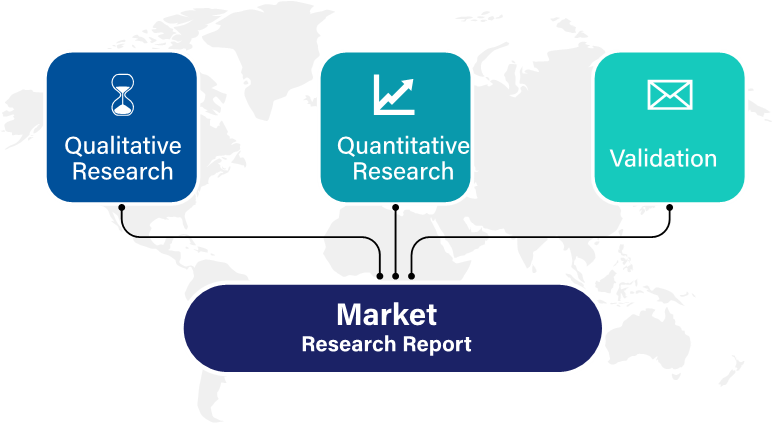
The Quantitative analysis involves numerous models, mathematical tools, projection, and sampling techniques. It encompasses the following steps:
Recognize market variables and derive market size.
Valuation of prospects, opportunities, and market penetration rates by analyzing Application Predictive Maintenance Solution, regional trends, etc.
Gauge historical market trends and derive present and future year-on-year growth trends
The qualitative analysis covers briefing about market dynamics and business opportunities and strategies. Lastly, all the research findings are authenticated over interviews with in-house industry experts, freelance consultants, and key opinion leaders, etc.
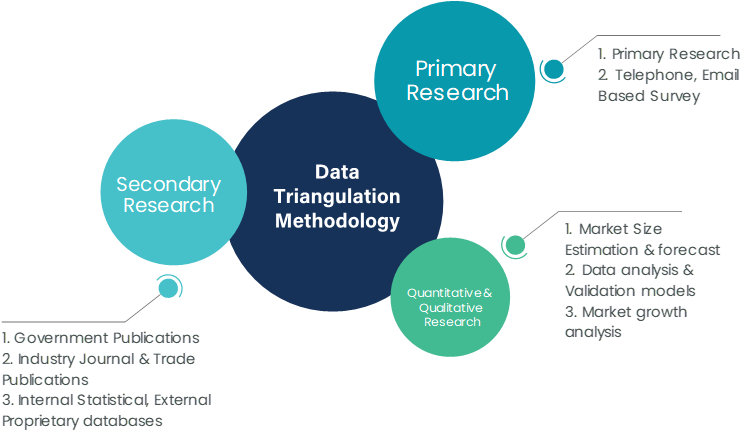
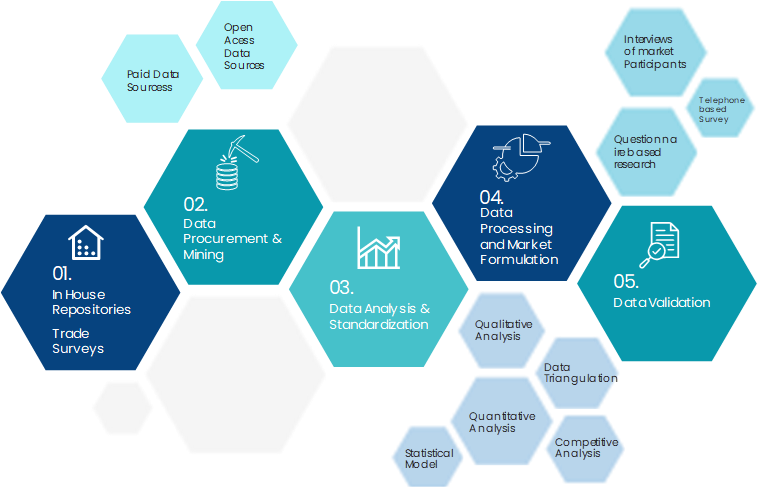
The preliminary raw data and relevant information are acquired via different sources such as secondary findings, trade surveys, and in-house repositories. Technical issues and trends are attained from technical symposia, surveys, and trade journals. Market dynamics such as driving factors, restraints/challenges, pricing trends, and opportunities are also collected using extensive secondary research via paid and open access data sources.
This info is then filtered to make sure that the related data including market trends, industry dynamics, and outlook is retained for the further research End-user. Data is constantly filtered to confirm that only authenticated sources are measured.
It comprises analysis & mapping of all the data gathered from the above step. It also includes the analysis of data differences observed across numerous data sources and arrives at final data points to be used for final calculations.
This step involves data End-user using various models, mathematical tools, projection, and sampling techniques to derive market findings. It also involves the placement of data points at suitable market spaces to gather viable conclusions.
Market estimates and forecasts are derived via simulation models. Collected data for market dynamics, Propulsion Type sets, pricing trends, and Type development is fed into the model and evaluated simultaneously. These factors are studied on a comparative basis, and their influence over the prediction period is quantified by means of regression, correlation, and time-series exploration. Analyst viewpoint & subject matter expert-based heuristic form of market sizing also plays an essential part in this step.
Some of the parameters measured as a part of the statistical model are:
Macro-economic indicators
Micro-economic indicators
Socio-political indicators
Environmental indicators
Propulsion Type indicators
Validation End-user aids to finalize data points to be used for final calculations. Primary Interviews are conducted to authenticate the data and analysis.
Primary research includes questionnaire-based research, email interactions, online surveys, and telephonic interviews. Interviewees are approached by prominent companies across the value chain including suppliers, Propulsion Type providers, domain experts, and buyers to ensure a holistic and unbiased picture of the market.
Industry participants involved in this research study include:
CEOs, VPs, market intelligence managers
Procuring and national sales managers technical personnel, distributors, and resellers
Research analysts and key opinion leaders from various domains
Our research methodology includes an ideal combination of primary and secondary initiatives.
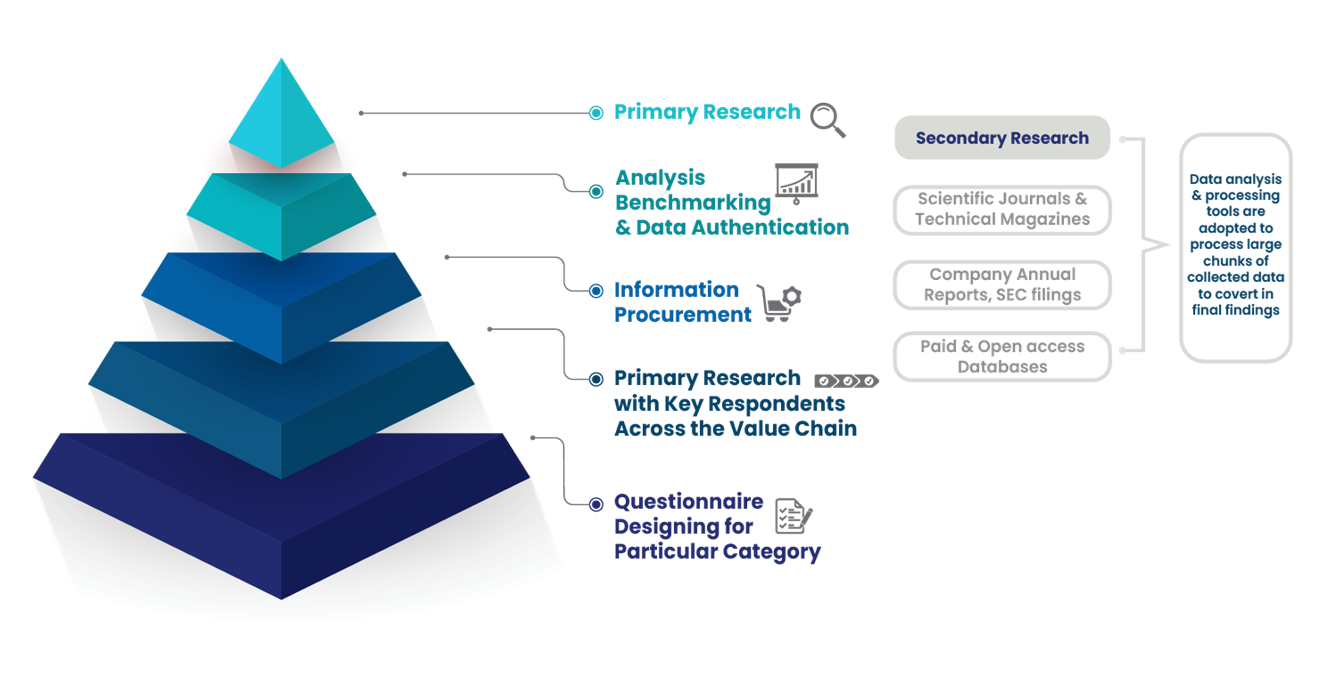
Source: International Market Research Analysis, 2024
It involves company databases such as Hoover's: This assists us to recognize financial information, the structure of the market participants, and the industry competitive landscape.
The secondary research sources referred to in the End-user are as follows:
Supply Chain and Inventory Managemental bodies, and organizations creating economic policies
National and international social welfare institutions
Company websites, financial reports and SEC filings, broker and investor reports
Related patent and regulatory databases
Statistical databases and market reports
Corporate Presentations, news, press release, and specification sheet of Manufacturers
Open access and paid data sources:
Eurostat
Statista
OneSource
Plastemart
WHO and World Bank
ITU
Factiva
Hoovers
Primary research includes online surveys and telephonic interviews.
Means of primary research: Email interactions, telephonic discussions, and questionnaire-based research, etc.
To validate our research findings and analysis, we conduct primary interviews of key industry participants. Insights from primary respondents help in validating the secondary research findings. It also develops Research Team’s expertise and market understanding.
Industry participants involved in this research study include:
CEOs, VPs, market intelligence managers
Procuring and national sales managers technical personnel, distributors, and resellers
Research analysts and key opinion leaders from various domains
We employ of following parameters in the absence of concrete data sources:
We assign weights to various parameters and quantify their market influence with the help of weighted average analysis, to derive an expected market growth rate
Income distribution, purchasing pattern, per capita income, and other end-user associated parameters
GDP, inflation rate, per capita disposable income, etc.
Expenditure, financial policies of the country, infrastructure and sector growth, and facilities
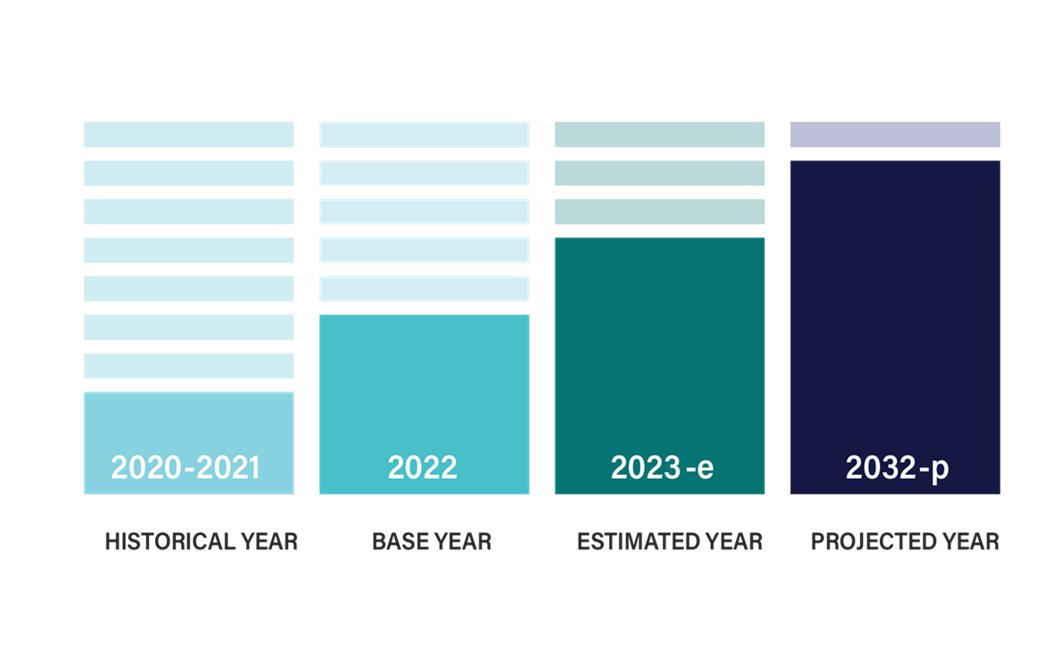
Source: International Market Research Analysis, 2024
International Market Research(IMR) is global leader in Market Research & Consulting services.